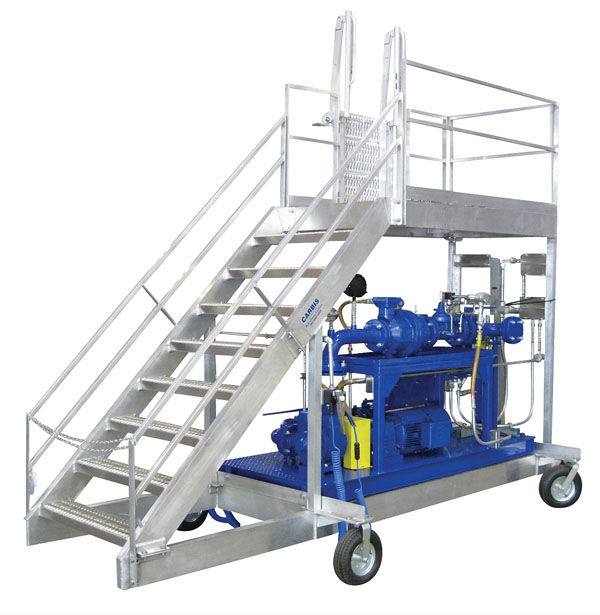Since the need for domestic oil production has become such a huge issue, and because many of the newly discovered oil deposits are nowhere near the existing pipeline structure, this creates an additional hurdle for the oil companies. Once crude oil is discovered and extracted how can the oil company get it to the refinery safely and cost effectively?
.jpg) Once the crude is extracted it’s pumped into huge storage containers called floating roof tanks. Depending on where the nearest railroad tracks are the company may be able to load directly into rail cars. But more than likely they will need to load the crude into a tanker truck, which will then take the oil and transfer it into a rail car. This is the definition of transloading, to transfer a shipment from one mode of transportation to another. The term is used when one form of transportation cannot be used for the entire trip.
Once the crude is extracted it’s pumped into huge storage containers called floating roof tanks. Depending on where the nearest railroad tracks are the company may be able to load directly into rail cars. But more than likely they will need to load the crude into a tanker truck, which will then take the oil and transfer it into a rail car. This is the definition of transloading, to transfer a shipment from one mode of transportation to another. The term is used when one form of transportation cannot be used for the entire trip.
The driver extracts enough oil from a storage tank to fill his/her tank truck and takes it to the nearest terminal. The driver offloads the crude into an awaiting rail car that sits on a rail spur so the rail car can get back to the railway. Using rail cars to carry product is archaic but it’s still the best way to transport lots of products including crude.
The caveat with transloading is that it adds extra steps into the transportation process thereby increasing the possible dangers to workers and the public at large. The best way to combat this is to have a properly constructed terminal with safety equipment so accidents are prevented and the crude keeps moving toward its final destination – the refinery.
Transloading crude is often done using a top or bottom loading arm that connects quickly to save loading time. Bottom loading arms are the preferred loading method since slips and falls are prevented. Still the driver will need to get to the top of the rail car to vent it.
Crude oil loading racks are built to be level with the rail car so the worker just has to fold out the gangway for safe access from the fixed platform across the gangway to the top of the rail car. The pipe for a loading arm runs to the platform when there’s a top loading arm or along the ground for a bottom loading arm. This pipe acts like a hose drawing the product from the tanker truck and depositing it into the railcar.
Spill containment is another necessity when transloading. Most of the time a spill happens when a seal fails during loading or offloading, but it’s best to be prepared at all times. Spill containment track pans will contain crude oil and other liquids quickly and easily so there’s no damage to the environment.
Once the crude has been transloaded into rail cars, it’s ready to go to the refinery. After offloading, the entire process starts all over again from the beginning.



